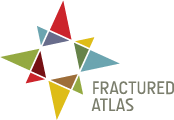This post is slightly modified from comments Zhenya Lavy originally made on Facebook July 4-5 regarding Devon Smith’s post about a debate she engaged in at the recent American’s for the Arts Conference in Nashville.
Zhenya tapped into the conversation when Theatre Puget Sound Executive Director Karen Lane pointed to it and asked, “Is this something we have or can talk about honestly in our community?”
Here is what Zhenya wrote:
This conversation… yes, please. In Seattle and elsewhere. My inclination: Let Them Die. It’s sad, but 9 times out of 10 it’s the right thing. Convince me otherwise.
The author definitely misses the mark on her substitutions for theatre, but I am 100% behind the argument that it’s usually the wrong things being saved: the administration, a space with a name on it that no longer comes even close to founding mission, etc. There are a lot of points of connection in the post that I could go on about. It’s almost never the actual art or artists being “saved” when the call is heard that x org needs $y millions in z months or it will close its doors (which has happened on a large scale 3 times in Seattle since we moved here). Those crisis moments have always been a bail-out for inexcusable mismanagement of funds and resources by administrators and ADs who ran the org into the ground for years without taking adequate, responsible steps to right course or allow the public a hint of the true situation… and then jumped ship just before it all fell apart (often leaving a new team to take the fall, as if they had actually caused the demise because they just couldn’t handle the awesome responsibility of such a large org as masterfully as their predecessors).
As the most recent example, Intiman looms very large here. Those of us running arts orgs in Seattle in the early 2000s knew Intiman was in financial trouble then, that they were building lavish shows on the expectation of funds not yet raised through grant-incentivized budget processes that demanded such risk. It was an inside topic of conversation among arts leaders that the sign of Intiman’s end game would be Laura Penn’s departure. She and Bart Sher drove that org as far as they could without fixing it and got themselves promoted to bigger gigs before allowing the damage of their leadership to become visible.
On a separate but related line, I’m particularly fascinated that the author of the linked post lists Intiman among the theatres now dead. Why, then, do we still have the re-jiggered Intiman Festival purporting to be its partial-year continuation (as if it were the same org, just doing work in a more focused timeframe and without the overhead expenses of their own space)… but what it has really done is just parasite off the board connections, fundraising machine, unearned goodwill of the playhouse owners/managers, and audience association of the historical name to a new group who — whatever the quality of the work — is no longer connected to Intiman’s founding mission and, frankly, has no business continuing to squeeze the Intiman name for resources and audience.
As Joseph said the other day, the Rolling Stones are an arts institution, but when either Jagger or Richards goes, that will be the end of it. Nobody would consider finding a replacement so the band could go on.
When Julian Lennon began his musical career, there was public speculation that The Beatles might have him stand in for John… but nobody in The Beatles actually entertained that notion seriously.
And you never hear, “Seattle’s best Thai restaurant is going to go out of business if everybody doesn’t pull together $35 million in donations in 4 months.” Businesses go out of business.
Why is it different with theatre? Is it because the non-profit model attaches public-governance to arts institutions and turns them into bricks-and-mortar properties rather than a particular collective of artists? Is it because non-profit boards are usually comprised of well-meaning civic and business leaders with the deep pockets/connections an org needs to get by but without actual personal artistic experience or merit themselves… who collectively believe one actor is as good as the next or one director can be replaced equally by another? That kind of thinking works with presenting orgs like On The Boards or LaMaMa, but it would never work with Odin or Foreman’s Ontological-Hysteric Theatre (not even with the Incubator) or … name any others. And, frankly, it only very marginally works with the Workcenter of Jerzy Grotowski, even though Grotowski named his artistic successor.
Today’s WET is not the WET of its founders, whose artistic synergy fired a potent spark. Today’s Seattle Rep is not the Rep of its founders… it’s not even repertory…. and the work is spotty.
So what actually gets sustained?
And what else might be permitted to flourish if resources and attention weren’t focused on the buildings and administrations? Who knows what orgs never even had the opportunity to get off the ground because donors dumped money into saving dying institutions whose artistic moment has passed? It’s just an org, it’s not the art.
The issue only attains to orgs with a particular “scale” — it doesn’t apply to all. The recognition that institutionalization kills some art and artists as much as it might prop others up is not new. I myself soundly argued against institutionalization back in 2005 when I participated in a TCG panel with Molly Smith of Arena Stage and Lou Bellamy of Penumbra titled “S-M-L-XL: Size and Scale in American Theatre.” As co-artistic director of Akropolis Performance Lab, I represented the “S” in that equation. I urged young artists and collectives to resist the drive to institutionalize because it diverts their focus and energy away from the art — that they can still achieve their artistic vision and thrive without a 501c3, board, or dedicated space. Part of that argument is also the recognition that for most, the organization IS its people. The Living Theatre survived the loss of Beck but BOTH Beck and Malina??? Never. The composition of Akropolis Performance Lab’s ensemble has changed over time, but the org will not live beyond me and Joseph. The same is true of theatre simple — Andrew and Llysa have worked with a range of artists, but the organization is inextricably tied to them. This is positive valence.
Everything has a natural life cycle. Dying orgs can and should die so new orgs can appear.
Stop propping up corpses.



